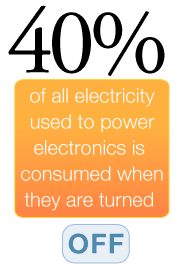City Projects in Energy Efficiency and Conservation
Education
According to a recent study reviewing about 200 behavioral research papers, the most successful educational programs have the following characteristics:
- The message is vivid, concrete and specific
- The message comes from a trusted source
- The message emphasizes potential losses from wasteful practices instead of potential savings
- The message is personal. Face-to-face communication is more effective than written statements
- The message is tailored to the target audience
- Public Education: Consider the Audience
A survey published in 2004 entitled "The Quality of Life in San Diego" and funded primarily by the California Public Utilities Commission shed light on some of the pitfalls of making false assumptions about a community's beliefs. San Diego had just faced an energy crisis from 2000 to 2001 and city staff had assumed that the survey's participants would think energy conservation was an important issue. On the contrary, less than half of those surveyed rated conservation of energy as very important. Since then, San Diego has run a public education campaign to change that. Click here for educational materials and example educational websites.
Ways to educate residents:
- Send out a questionnaire to find out how much residents know about energy conservation and climate change. Discovering the beliefs of constituents around energy and climate change is key.
- Mobilize volunteers and city workers to visit homes to collect questionnaires mailed out by the city.
- Use firefighters to conduct energy audits for homeowners. They can be trained by a utility serving your area.
- Distribute media advertising and educational materials. This could include information about energy saving devices and financing for such devices as well as rebates. Also include a referral service for residents who want to make energy-saving upgrades to their homes.
- Create a lecture series on energy conservation and climate change sponsored by the utility or university in your area.
- Offer free use of an electric meter for residents.
- Offer free installation of load management devices.
Changing Wasteful Habits: In the average home, 40% of all electricity used to power home electronics is consumed while the products are turned off. Add that all up, nationwide, it equals the annual output of 17 power plants.
Ways to educate businesses:
- Send out a questionnaire to find out how much businesses know about energy conservation and climate change.
- Work with your local utility to offer energy audits for businesses at minimal cost.
- Distribute media advertising, including an educational newsletter from the utility in your area. This could include information about energy-saving devices and financing for such devices as well as rebates. Also include a referral service for business owners who want to make energy-saving upgrades to their facilities.
- Send experts to speak about climate change and the benefits of energy conservation in business at chamber of commerce meetings and events.
- Offer free use of an electric meter for businesses.
- Offer free installation of load management devices.
Ways to educate school children:
Develop curriculum materials that are specific to local conditions. This may include science experiments and science projects, math problems and information about climate change and energy sources. In conjunction with the curriculum, aid educators in arranging a field trip for the children to visit a local power plant and see first-hand how power is generated and distributed and why conservation is important.
Examples
Read our Local Governments Best Practices Guide for ideas on how to educate employees.


